Stay in the know on all smart updates of your favorite topics.
Inclusief Eten | Praat mee in ons Impact Hub online café

Op donderdag 15 juli vertellen oa Stichting Mixblik , De VerbroederIJ en Groenten Zonder Grenzen (GZG) hoe ze door middel van voedsel sociale inclusie bevorderen én hoe de teams van Young Impactmakers Community ze daarbij hebben geholpen in de afgelopen 8 weken.
Daarna organiseren we een online cafe, om samen in gesprek te gaan over ons sociale voedsel ecosysteem en hoe we elkaar verder kunnen helpen. Zin om mee te praten? Pak een drankje en schuif (online) aan!
We starten om 15.00 en je kunt je aanmelden voor de zoomlink.
Prijsvraag achterkant Upcyclecentrum (ondernemers gezocht!)

Van april t/m oktober 2022 is Floriade Expo 2022 in #Almere. Bezoekers zullen bij binnenkomst de achterkant van het Upcyclecentrum zien. Maar de achterkant vertelt niet zoveel over wat er allemaal bij het Upcyclecentrum gebeurt op gebied van circulaire economie. Daarom zijn wij op zoek naar creatievelingen en makers die ideeën hebben voor het verfraaien van de achterkant van het Upcyclecentrum. Of het nu een circulair spandoek is, of een groene wand of een kunstwerk. Het belangrijkste is dat het het verhaal vertelt van het Upcyclecentrum / De Steiger.
Hoe en wat je vertelt, staat je helemaal vrij. Voor je idee mag je gebruik maken het hek achter het centrum, een deel van het gebouw, maar ook van het groen. Mail je idee voor 23 augustus 2021 naar Lorieke Hiam - de Lange via lhiam@almere.nl. Kijk op de website voor meer informatie en de voorwaarden.
CoECI - Creative Thursday Meetup #2

Op donderdag 16 september vindt de tweede Creative Thursday Meetup plaats van het Centre of Expertise for Creative Innovation. Dit keer zijn we te gast bij het SluisLab, de social innovation hotspot van Hogeschool Inholland op het Zeeburgereiland. Onze eerste fysieke meetup waar we elkaar eindelijk echt kunnen ontmoeten en leren kennen!
Tijdens onze meetups kun je achterover leunen, kennis opdoen en partners voor samenwerking vinden. Een meetup zonder al teveel regels, maar altijd op inspirerende plekken buiten de schoolmuren waar creatieve innovatie plaatsvindt. Waar studenten, docenten en onderzoekers samen met buurtbewoners werken aan het oplossen van vraagstukken op buurtniveau.
Kom naar onze eerste live meetup en maak kennis met het team van CoECI, het SluisLab en leer nieuwe mensen kennen tijdens de borrel!
Programma
16:00 | Inloop
16:05 | Welkom & Update CoECI
16:20 | Introductie Sluislab door Esther Bouw, Learning director SluisLab
16:30 | Tijd om nieuwe mensen te leren kennen
17:00 | Einde
SluisLab Safari
Tijdens de tweede helft van het programma is er de mogelijkheid om deel te nemen aan de korte Sluislab Safari. Met Karel Koch wandelen we in een halfuurtje over Zeeburgereiland: via Skatepark Zeeburgereiland - de grootste betonnen buitenbaan van Nederland - en Dynamo's Buurtkamer, in noordelijke richting over de IJdijk naar de zandvlakte van de toekomstige Sluisbuurt. Daar bezoeken we kort het placemaking terrein: het gebied voor bewonersinitiatieven én de plek waar volgend jaar Broedplaats Baggerbeest gaat verrijzen: een mooie mix à 2500m2 van ateliers voor kunstenaars, SluisLab en leer-, werk- en ontmoetingsplaatsen voor makers, bewoners, ondernemers en studenten.
Maximaal aantal deelnemers meetup: 50
Maximaal aantal deelnemers wandeling: 15
Vol = Vol
Dus meld je gauw aan via de link hieronder 👇🏻 Deelname is gratis.
Locatie
De meetup zal plaatsvinden bij Bluey's op het Zeeburgereiland.
Note van ASC: Wil je net iets meer weten? Laat het weten in de comments.
Livecast: How to Design a Sustainable and Inclusive City

In this upcoming edition of the MAB 2021 we focus on how interactive digital products, environments, systems, and services will help us in shaping and building a sustainable and inclusive future city.
How can (digital) design and art play a role in the sustainable and inclusive city? And how does digitalization influence architecture and urban living spaces?
When: Thursday, July 1st
What time: 16:30-18:00 CEST
The New European Bauhaus initiative connects the European Green Deal to our living spaces. It calls on all Europeans to imagine and build together a sustainable and inclusive future that is beautiful for our eyes, minds, and souls.
The Centre of Expertise for Creative Innovation (CoECI) shares the European ambition and supports this initiative. That is why CoECI recently became official partner of the New European Bauhaus. As such, CoECI invites architects, thinkers and designers to elaborate on the needs and good examples that will help us to reach the sustainable ambitions for Europe.
Organizers
Loes van der Tuuk | L.van.der.tuuk@hva.nl
Organized by Centre of Expertise for Creative Innovation.
Metropolitan Mobility Podcast!

Chris Bruntlett (Dutch Cycling Embassy) and Geert Kloppenburg are looking back at the Celebrating Cycling Cities event and our interviews with mobility experts from all over the world! Listen to the best practices and who we would like to speak next: https://bit.ly/mobilitypod
Beyond the smart city: Digital innovation for the Good of citizens

About ten years ago, technology companies started to provide cities with technology, luring them with the predicate ‘smart(er)’, a registered trademark of IBM. At that time Cisco's vice-president of strategy Inder Sidhudescribed the company’s ‘smart city play’ as its biggest opportunity, a 39,5 billion dollar-market. During the years, that followed, the prospects rocketed: The consultancy firm Frost and Sullivan estimated the global smart city technology market to be worth $1.56 trillion by 2020.
The persistent policy of technology companies to suggest a tight link between technology and the wellbeing of the citizens, angers me. Every euro these companies are chasing at, is citizens’ tax money. What has been accomplished until now is disappointing, as I documented in the IET Journal. According to The Economist it is not surprising that a ‘techlash’ is underway: Many have had it with the monopolistic dominance of behemoths like Google, Amazon, Facebook and the like, because of their treatment of sensitive data, the lack of transparency and accountability of algorithm-based decision making and the huge profits they make from it.
Regaining public control
However, let's not throw out the baby with the bathwater and see how digital innovation can be harnessed for the Good of all citizens. Regaining public control demands four institutional actions at city level.
1. Practicing governance
Before even thinking about digitalization, a city must convert into best practices of governance. Governance goes beyond elections and enforcing the law. An essential characteristic is that all citizens can trust that government represents their will and protects their interests. Therefore, it is necessary to go beyond formal democratic procedures and contact stakeholders directly, enable forms of participatory budgeting and deploy deliberative polling.
Aligning views of political parties and needs and wants of citizens takes time and a lot of effort. The outcome might be a common vision on the solution of a city’s problems and the realisation of its ambitions, and a consecutive political agenda including the use of tools, digital ones included.
2. Strengthening executive governmental power
Lack of cooperation within the departmental urban organizations prevents not only an adequate diagnosis of urban problems but also the establishment of a comprehensive package of policy instruments, including legislation, infrastructure, communication, finance and technology. Instead, decisions are made from within individual silos, resulting in fragmented and ineffective policies. Required is a problem-oriented organization instead of a departmental one and a mayor that oversees the internal coherence of the policy.
3. Level playing field with technology companies
Cities must increase their knowledge in the field of digitization, artificial intelligence in particular. Besides, but they should only work with companies that comply with ethical codes as formulated in the comprehensivemanual, Ethically Aligned Design: A Vision for Prioritizing Human Well-being with Autonomous and Intelligent Systems, drafted by the influential Institute of Electric and Electronic Engineers (IEEE)
Expertise at city level must come from a Chief Technology Officer who aligns technological knowledge with insight in urban problems and will discuss with company representatives on equal foot. Digitalisation must be part of all policy areas, therefore delegating responsibility to one alderman is a bad idea. Moreover, an alderman is not an adequate discussion partner for tech companies.
4. Approving and supporting local initiatives
Decentralization of decision-making and delegating responsibility for the execution of parts of the policy to citizen’s groups or other stakeholders helps to become a thriving city. Groups of citizens, start-ups or other local companies can invoke the right of challenge and might compete with established companies or organizations.
In summary: steps towards seamless integration of digitalization in citizen-orientated policy
1. Define together with citizens a vision on the development of the city, based on a few central goals such as sustainable prosperity, inclusive growth, humanity or - simply - happiness.
2. Make an inventory of what citizens and other stakeholders feel as the most urgent issues (problems and ambitions).
3. Find out how these issues are related and rephrase them if desirable.
4. Deepen insight in these issues, based on available data and data to be collected by experts or citizens themselves.
5. Assess ways to address these issues, their pros and cons and how they align with the already formulated vision.
6. Make sure that digital technology has been explored as part of the collected solutions.
7. Investigate which legal, organizational, personnel and financial barriers may arise in the application of potential solutions and how to address them.
8. Investigate undesired effects of digital techniques, in particular long-term dependence ('lock-in') on commercial parties.
9. Formulate clear actions within the defined directions for dealing with the issues to be addressed. Involve as many expert fellow citizens as possible in this.
10. Make a timetable, calculate costs, and indicate when realization of the stated goals should be observable.
11. Involve citizens, non-governmental and other organizations in the implementation of the actions and make agreements about this.
12. At all stages of the process, seek support from those who are directly involved and the elected democratic bodies.
13. Act with full openness to all citizens.
I can't agree more than with the words of Léan Doody (smart city expert Arup Group): I don't necessarily think 'smart' is something to strive for in itself. Unlike sustainability or resilience, 'smart' is not a normative concept…. The technology must be a tool to deliver a sustainable city. As a result, you can only talk about technological solutions if you understand which problems must be solved, whether these problems are rooted in the perceptions of stakeholders and how they relate to other policy instruments.
Urban Mobility: Cycling transitions in two major European cities

After approximately 15 podcast interviews with experts from around the world, it's time for researcher/advisor/podcastmaker Geert Kloppenburg to look back at the best practices. He started 2,5 years ago with the idea to just contact people in the cities who are actually implementing changes in the streets at this moment. He has discovered so many great best practices that he would like to share.
Geert visited different cities around the world to interview experts on cycling and mobility and noticed an explosion in cycling. And when Corona came, the use of bicycles grew even more.
In this interview Geert looks back on 15 podcast and video interviews on the transformation of different cities.
Watch the 9 minute video and let us know what you think.
Note from ASC: What are your thoughts after watching 👀? Let us know bellow.
Hoogbouw vraagt om een menselijke maat nu steden verdichten

HvA-onderzoeksproject Sensing Streetscapes deelt eindresultaten en gaat op excursie naar vier steden met ontwerpoplossingen op ooghoogte.
De populariteit van de stad zet alsmaar door, en dat is te zien aan huidige bouwprojecten. Die gaan steeds meer de hoogte in nu de stad verdicht. Van Londen tot Oslo en van Vancouver tot Amsterdam. Lectoraat Bouwtransformatie van de Hogeschool van Amsterdam (HvA) onderzocht met ontwerpbureaus, gemeenten, ontwikkelaars en woningbouwcorporaties binnen onderzoeksproject Sensing Streetscapes hoe je een menselijke maat kan creëren in gebiedsontwikkeling met hoge dichtheden. De onderzoekers zetten hiervoor ontwerpend onderzoek, neuroarchitectuur en AI in. Welke lessen voor de praktijk leverden dit 2-jarige onderzoek op en tot wat voor inzichten kwamen de experts rondom dit actuele vraagstuk?
De onderzoekers binnen het actieonderzoek Sensing Streetscapes analyseerden in Amsterdam, Vancouver, Toronto, Manchester, Londen en Oslo de toegepaste ontwerpoplossingen om hoogbouw te verschalen naar menselijke proporties op ooghoogte. Omdat zowel de ontwerpopgave als de methodiek van neuroarchitectuur nieuw zijn voor Nederland werkten zij samen met internationale partners en steden. De analyses tonen de gerealiseerde oplossingen voor dezelfde stedenbouwkundige regels. Grote verschillen werden hierdoor zichtbaar.
Kijken als professional: zes casestudies ontwerpend onderzocht
Terwijl Toronto zich manifesteert met extreme en harde keuzes die de hoogbouw letterlijk aan de straat tonen, is er in onder meer Vancouver, Manchester en Amsterdam veel meer gelaagdheid. Bovendien zijn er meer details toegepast waarmee de hoogbouw visueel minder nadrukkelijk aanwezig is voor de gebruikers in de straat. En dat is nodig, want een menselijke maat op straatniveau verbetert de leefbaarheid op hoogbouwlocaties en verhelpen gezondheids- en stressklachten gerelateerd aan deze milieus.
De Zuidas in Amsterdam als ‘mixed-use’ gebied is een voorbeeld waar de hoogbouw goed werkt, vertelt Frank Suurenbroek, lector Bouwtransformatie bij het Centre of Expertise Urban Technology van de HvA, tijdens een excursie door de Zuidas. ‘De verbinding tussen de zakelijkheid van kantoren en de zachte materialen voor woningbouw is hier grotendeels geslaagd. Daarnaast is er veel groen door mooie pocket parks (kleine parken), die deels toegankelijk zijn voor publiek én zelfs ontworpen zijn met bewoners.’ Internationale experts ‘vlogen digitaal in’ en een belangrijk deel van de Nederlandse praktijk — van ontwerpbureaus tot ontwikkelaars, brancheorganisaties en hoofdontwerpers van de grote steden — waren aanwezig bij de excursie als onderdeel van het eindseminar, waar de opgedane kennis na twee jaar onderzoek werd gepresenteerd en gedeeld.
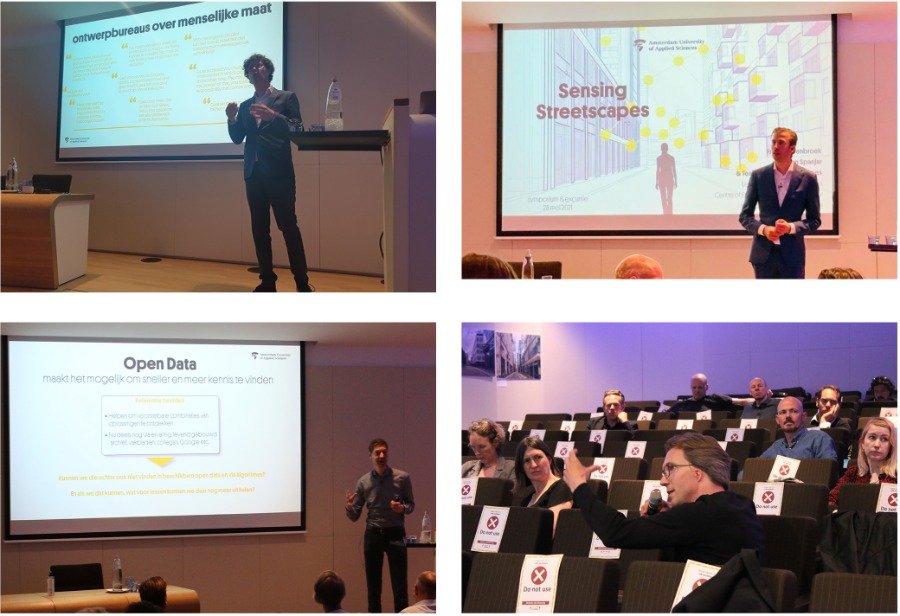
Zo werd ook duidelijk dat bewoners in Londen soms in sociaal isolement verkeren door wonen in hoogbouw op schiereiland Isle of Dogs, vanwege weinig contact met de buren en de straat. Terwijl soortgelijke milieus in Amsterdam, Vancouver en Oslo een ander beeld laten zien vanwege de natuur waarmee zij omringd zijn. ‘De laatste jaren tonen aan dat groen een belangrijke drager voor ontwerp is geworden’, verklaart Gideon Spanjar, projectleider van Sensing Streetscapes. ‘Bewoners van hoogbouw hebben in Vancouver zicht op natuur en de grote en kleine korrel van gebouwen zijn bewust gemengd. Tevens werken zij met ontwerpoplossingen om de hoogbouw voor de voetganger aan het zicht te onttrekken door de gebouwen naar achteren te plaatsen, waarbij het bladerdak van bomen de ruimte subtiel begrensd. Dit noemen we ook wel Vancourism.’
Kijken als gebruiker: neuroarchitectuur ontsluit de beleving
Maar hoe ervaren de bewoners ontwerpoplossingen op ooghoogte zelf? Het nieuwe vakgebied van de neuroarchitectuur biedt de mogelijkheid om hier voor het eerst antwoord op te geven. Iedereen kent immers plekken die fijn aanvoelen en plekken waar je snel weer weg wilt. Met neuroarchitectuur wordt dit proces zichtbaar gemaakt met behulp van eye-trackers en een hiervoor ontwikkeld biometric dashboard. De eye-trackers registreren 30 keer per seconde waar de gebruiker naar kijkt, hoe lang en in welke volgorde. Door vele proefpersonen systematisch verschillende locaties voor te leggen, worden patronen zichtbaar op een heatmap (zie hoofdfoto als voorbeeld).
Uit de veld- en labtests blijkt het belang van wat op ooghoogte wordt ontworpen, zoals de ontwerpers voorspellen. Hierbij werd specifiek duidelijk dat mensen eerst op zoek gaan naar andere mensen. Daarvoor wordt de ruimte gescand op plekken waar je die kan verwachten, zoals balkons, portieken, entrees, fietsenrekken en auto’s. Evenals de functies op de begane grond en het materiaal van gebouwen. En terwijl te veel complexiteit in de straat veel aandacht trekt in negatieve zin, vallen zowel een dichte als een transparante plint minder op. De contouren van een verhoogde plint worden daarbij daadwerkelijk gezien en helpen hoogbouw verschalen. Tot slot werkt een geleidelijke overgang tussen straatwand en straatruimte goed.
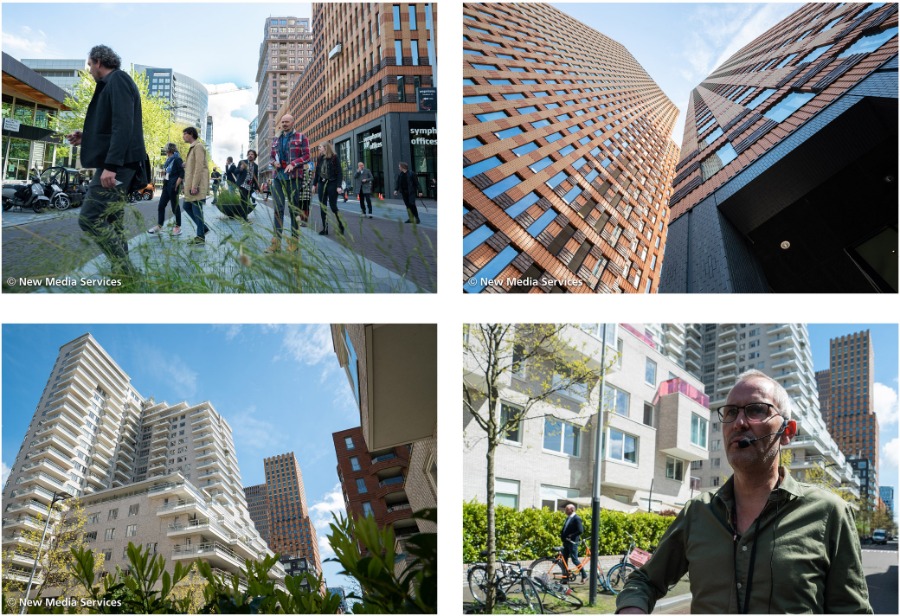
De balans tussen succesvol en niet succesvolle ontwerpoplossingen is subtiel, verklaart lector Suurenbroek. ‘Als we willen dat mensen niet overweldigd raken door hoogbouw, dan zijn neuroarchitectuur-testen gedurende het ontwerpproces van belang. De ontwikkelde methode en patronen die daarmee zichtbaar worden tonen aan dat het ons echt kan informeren over de impact van ontwerpkeuzes.’
Kijken vanuit data: AI ontsluit rijke reeks leerzame locaties
Iedere bouwopgave binnen de bebouwde stad heeft te maken met unieke uitdagingen, maar goed gerealiseerde voorbeelden uit de praktijk kunnen dienen als referentie voor de impact van mogelijke ontwerpoplossingen. Met behulp van AI is binnen het onderzoek een search-engine gebouwd, waarmee via open data vergelijkbare locaties getraceerd kunnen worden. Hiermee helpt AI de ruimtelijk ontwerpers en opdrachtgevers een rijke reeks aan bijpassende referentielocaties te vinden, van Europa tot Noord-Amerika. De mate van hoogbouw, Floor Space Index, Mixed-use is een greep van parameters die je zelf kan instellen.
Suurenbroek: ‘Eenmaal gebouwd bepaalt een ruimtelijk project voor decennia het aanzien en de condities van de plek en omgeving. Juist daarom proberen we met ons onderzoek en de excursie het gesprek tussen de ontwerpers, opdrachtgevers, toekomstige gebruikers en internationale experts te faciliteren. Bovendien vertoont de groei van Amsterdam veel overeenkomsten van die van de meeste andere westerse steden. Ontwerpend onderzoek, neuroarchitectuur, de AI-tool en excursies helpen daarbij. Ontwerpen van het straatniveau valt immers deels tussen verschillende disciplines in.’
Meer informatie
Het eindseminar en de excursie zijn onderdeel van het 2-jarig onderzoeksproject Sensing Streetscapes, waar lector Bouwtransformatie Frank Suurenbroek, hoofdonderzoeker Gideon Spanjar en senior AI-onderzoeker Maarten Groen (lectoraat Resonsible IT) hun resultaten hebben gedeeld. Alsook diverse experts uit Oslo, Vancouver en Londen. Binnen het project werkt een interdisciplinair team van onderzoekers samen met de praktijk en internationale onderzoeksgroepen aan het ontleden van het begrip menselijke maat voor het ruimtelijk ontwerp. Om de resultaten te ontsluiten en de AI-tool open access te gebruiken, is een platform gebouwd: www.sensingstreetscapes.com.
De extreem ambitieuze missie van Amsterdam Smart City: Bruto Menselijk Geluk voor 2030

Onze inzending voor ‘Missie Nederland’ van de Volkskrant (wat kan eigenlijk niet, maar wil je toch voor elkaar krijgen), oftewel een “Moonshot”, is het creëren van Bruto Nationaal Geluk met digitale sociale innovatie. In 9 punten de missie die we samen met Future City Foundation, het G40 Stedennetwerk, BTG Branchevereniging ICT en Telecommunicatie Grootgebruikers hebben ingestuurd.
Om dit te bereiken, moeten we zorgen dat íedereen kan meedoen in onze maatschappij, onze democratie. Ook de groep mensen die we nu niet horen. Met digitale technieken maken we nieuwe verbindingen mogelijk. Zodat je mee kan doen, bij kan dragen, ook als je de deur niet uit kunt, verbaal minder sterk bent of amper tijd hebt. Zo kan iedereen bijdragen aan het eigen geluk én aan dat van een ander.
In 2030 ...
… is geen enkele Nederlander meer digibeet, in plaats daarvan is elke Nederlander digitaal vaardig.
… heeft elke inwoner van Nederland toegang tot hoogwaardig internet. Dat betekent dat elk huis wordt aangesloten op snel vast en mobiel internet en elk huishouden in staat is om apparaten te kopen waarmee toegang mogelijk is. Een goede laptop is net zo belangrijk als een goede koelkast.
… wordt het internet op een nieuwe manier gebruikt. Toepassingen (software en
hardware) worden vanuit de gebruikers gemaakt. Met als uitgangspunt dat iedereen ze kan gebruiken. Programma’s en de daarvoor benodigde algoritmen worden zo geschreven dat ze ten dienste staan van de samenleving en niet van het bigtech-bedrijfsleven.
… heeft elke inwoner van Nederland een ‘self-sovereign-identity’ waarmee ze vrij, binnen de context van hun eigen grenzen, digitaal kunnen opereren en acteren.
… is nieuwe technologie ontwikkeld die de inwoners en bedrijven de kans mee te
denken en beslissen over en mee te ontwikkelen en handelen aan welzijn regio’s,
steden en dorpen.
… hebben alle Nederlandse politici verstand van digitalisering en technologisering.
… is het Nederlandse bedrijfsleven leidend in de ontwikkeling van deze oplossingen.
… zorgt dit alles voor meer welzijn en niet alleen voor meer welvaart.
… is het internet weer van ons.
Laat ons weten wat je ervan vindt in de comments. Lees ook de hele moonshot.
Urban Living Lab Summit 2021 - by AMS Institute

Are you a Living Lab Practitioner or Researcher and wondering about the impact of living labs? Join the ULL Summit on June 22nd!
The third edition of the Urban Living Lab Summit brings together living lab practitioners and researchers worldwide to work together on learning and co-creating with living labs. The leading question will be: ‘How to measure and make impact with urban living labs?' You can simply register to join and participate!
When: On June 22nd from 14-18 CEST
Where: Online
Price: Your time and Brain power (no costs)
The ULL Summit is an initiave from the Amsterdam Institute for Advanced Metropolitan Solutions (AMS Institute) but open to contributions from all!
200 Intelligent & Climate Neutral Cities Jam

This workshop is an initiative by Amsterdam Smart City in collaboration with RVO to bring together stakeholders from the Intelligent Cities Challenge (ICC) and the 100 Climate-Neutral Cities (CNC) mission, to share their ambitions and approaches, creating synergy and amplifying their impact.
Background
The Intelligent Cities Challenge (ICC) is a project by the European Commission (EC) helping more than 100 European cities on their way to green, climate-neutral and sustainable growth through the use of digital technologies. In 2021, the EC will also launch the 100 Climate-Neutral Cities (CNC) mission, supporting cities on their away to achieving climate neutrality by 2030. Both the ICC and CNC aim to support European cities in their transformation towards sustainability.
Together with ICC and CNC stakeholders we will discuss:
• The key lessons learned from the ICC regarding collaboration and innovation in city networks
• Examples of technological solutions from the ICC which can be scaled up in the CNC
• Potential collaboration and learning opportunities between ICC and CNC cities
Monday June 21, 15:00-15:55 CEST
Program
• 15:00 – 15:10 Welcome and introductions, Cornelia Dinca (Amsterdam Smart City International Liaison) & Leonie van den Beuken (Amsterdam Smart City Program Director)
• 15:10 – 15:30 Short pitches by ICC and CNC stakeholders including: Jacobine de Zwaan (RVO Advisor Smart Cities), Dana Eleftheriadou (Head of ICC), Paul Tuinder (DG Research & Innovation Advisor), Christiaan Norde (City of Amsterdam International Affairs Advisor)
• 15:30 – 15:50 Roundtable discussion with the audience
• 15:50 – 15:55 Final reflections and program end
Join the Meeting
The meeting will be conducted using Zoom. There are two ways to join:
1. Click on this Zoom link: https://us02web.zoom.us/j/85216055375?pwd=MDhZL0ZhbllZck5pSVo3YmR5dGt2dz09
2. Join using meeting ID: 852 1605 537 and Passcode: 775720
Call for Contributions
Are you an ICC or (aspiring) CNC city representative or stakeholder and would like to share your experience and perspective during the session? Please send an email to Cornelia Dinca via cornelia@amsterdamsmartcity.com with a short explanation of how you would like to contribute to the discussion and we will include you in the program.
The session is part of RVO's 100 Climate Neutral Cities Mission. Check the full program here: https://climateneutralcities.b2match.io/agenda
Pitch Event: Get inspired by impact entrepreneurs
MEET THE NEXT GENERATION OF IMPACT ENTREPRENEURS
Get inspired by early-stage impact entrepreneurs during the Pitch Event of our Business Model Challenge #20! These ambitious entrepreneurs will share their business cases with an audience of Impact Hub members, experts and potential partners.
And you are invited! After every pitch, you can support the entrepreneurs with their next steps by giving them feedback and providing them with valuable contacts. At the end of the program you will also help to decide, together with our jury, which startup deserves a special prize!
This pitch event will be held online.
Get inspired by early-stage impact entrepreneurs during the Pitch Event of our Business Model Challenge #20!
PROGRAM
15.55: Grab your virtual seat
16.00-16.10: Welcome and introduction to BMC
16.10-17.00: Listen to 8 fresh pitches!
17.00-17.15: Keynote from Omek: a community platform dedicated to the social and professional advancement of the African diaspora.
17.15-17.30: Winner announcement
WHAT IS THE BUSINESS MODEL CHALLENGE (BMC)?
In our three-month BMC incubator, we help impact entrepreneurs unlock the potential of their innovative ideas, and turn these ideas for a better world into scalable business models!
This BMC edition is powered by Amsterdam Impact, RS Finance and Benvalor. Want to hear more about the ins and outs of our impact ecosystems in areas including Food, Plastics, Circularity and Inclusion?
Sign up to our newsletter for monthly updates about upcoming events, business opportunities and inspiring member stories!
Digital Society Showcase

It’s that time of the year again! Are you ready for our Online Digital Society Showcase?
In 20 weeks the trainees of Digital Society School worked in multidisciplinary teams on developing a working prototype in collaboration with our project partners. During the showcase the teams will show you the prototypes and explain how they contribute to the Digital Transformation of Society and the Sustainable Development Goals. Of course it’s possible to ask your questions and have conversations with all the teams.
Save the date!
When: Monday June 21st
Whats time: 16:00 - 18.00 CEST
Cost: free
RSVP to secure a spot at our Showcase!
Programme
16:00 Welcome
by Zlatina Tsvetkova (Learning Experience Designer) and Marco van Hout (Creative Director)
16:10 Live talkshow “Dear Future, I’m Ready!”
with Interviews and conversations about
- Transformational Leadership and how we build capacity for it in Digital Society School
- Learning revolution - the vision, stories, and projects behind our track Educational Technology for social change and the new track we are starting in September, Beyond Blended
- Social tech and Digital Transformation -the vision, stories, and projects behind our tracks Digital Twin and Systems for Sharing
- World Building -the vision, stories, and projects behind our track Design Across Cultures and our biggest global event Global Goals Jam
- Instruments of change - stories about the ways we integrate technology in society with our instruments teams.
17:00 Opening of the EXPO
You can walk around our virtual venue and meet the teams that have worked on these topics for the last 5 months. They will show you their prototypes, tell you about the journey they took to create them and answer your questions.We will also have an open session to continue the conversations on the topics above with a possibility for you as an audience to join the discussion.
18:00 Closing
Meet the partners
Amsterdam Economic Board, Amsterdam University of Applied Sciences, Association of Dutch Municipalities (VNG), City of Amsterdam, Durham University, European Union, Generalitat de Catalunya, INNO-TEC-LAB, Metropool Regio Amsterdam, Municipality of Haarlem, Startup Amsterdam, Streaming Buzz, University of Amsterdam, University of Barcelona, University of Bucharest, University of Ljubljana.
The projects couldn’t be possible without all partners. A big thank you to all. We are very proud for having the chance to work with all of you.
Sustainable Development Goals
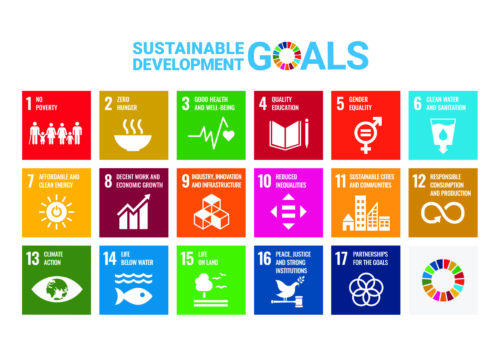
With our projects we support the Sustainable Development Goals (SDG) of the United Nations.
DRIFT and Amsterdam Smart City find each other in partnership
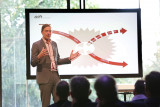
Research institute DRIFT, the Amsterdam Economic Board and Amsterdam Smart City have been working together for some time now. So it only seemed logical to make this union structural.
DRIFT develops and shares transition knowledge with innovative methods and academic training sessions and gets involved in the public debate. ‘Both at DRIFT and within the network of Amsterdam Smart City, we see opportunities and the necessity to change towards a sustainable society. We are happy to enrich this network with our specific knowledge and experience. But also to learn how to shape these kind of new collaborations. The open, learning approach really appeals to us,’ says Gijs Diercks, senior researcher and advisor at DRIFT.
Leonie van de Beuken: 'We are very happy that DRIFT is structurally committed to the Amsterdam Smart City network. We share a passion for empowering others to actively engage in transitions. From residents to entrepreneurs to governments. This way we can achieve tangible results. The knowledge and experience that DRIFT brings in this area is a wonderful addition to our network.'
Wicked Problems; the underlying barriers within transitions
For some time DRIFT has already been part of the team with partners that is developing an approach to tackle so-called 'wicked problems' better together. An approach aimed at revealing and breaking down underlying barriers within transitions. We use new methods for this and connect what we encounter in the implementation with the strategic level.
Picture credit: Edwin Weers
Op zoek: duurzame binding met je buurt
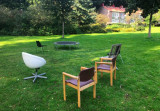
Interview met onderzoeker Anneke Treffers (HvA) over het belang van ‘buurtdragers’ om de binding met de buurt te versterken. Eindpublicatie toont resultaten van onderzoek naar de Couperusbuurt, Amsterdam Nieuw-West.
De Couperusbuurt: een multicultureel stadsdeel in Amsterdam Nieuw-West waar jong en oud samenkomen, maar ook kunnen botsen in opvattingen over wat hun buurt zowel prettig als onprettig maakt. De Hogeschool van Amsterdam (HvA) deed binnen project Ontwikkelbuurten onderzoek naar het belang van ruimtelijke structuren, plekken en programma’s die de binding van bewoners met hun buurt duurzaam kunnen versterken. Ofwel: ‘buurtdragers’. Onderzoekers Ivan Nio, Anneke Treffers en lector Bouwtransformatie Frank Suurenbroek presenteren na ruim twee jaar onderzoek de bevindingen.
De Nederlandstalige muziek van Café Content nabij de Couperusbuurt is eindelijk weer te horen nu de terrassen na lockdown open zijn. Vooral bewoners van het eerste uur komen hier regelmatig samen en dat is tekenend voor de buurt. Het is een voorbeeld van een ‘buurtdrager’ die samenhang en herkenbaarheid biedt, de leefbaarheid versterkt en de buurtbetrokkenheid van bewoners vergroot. Denk ook aan parkjes, hoven, portieken, winkelstrips en andere voorzieningen en faciliteiten in de nabijheid van de eigen woning.
Stedelijke vernieuwing in de Couperusbuurt
Maar niet elke buurtdrager is een voorziening voor iedereen. De Couperusbuurt kenmerkt zich als divers: jong en oud, multicultureel; maar de omgang met de verschillende groepen is laag. Daarnaast kent de buurt ook hardnekkige sociale problemen, waaronder een combinatie van een laag opleidingsniveau, een laag inkomen en een hoge werkloosheid. De veelal portiekwoningen, herkenbaar aan de typerende hovenstructuur van deze na-oorlogse wijk, zijn er erg klein, als gevolg van versnelde bouw na de Tweede Wereldoorlog. Nu anno 2021 wonen in deze kleine woningen een diversiteit aan bewoners en dat levert spanningen op.
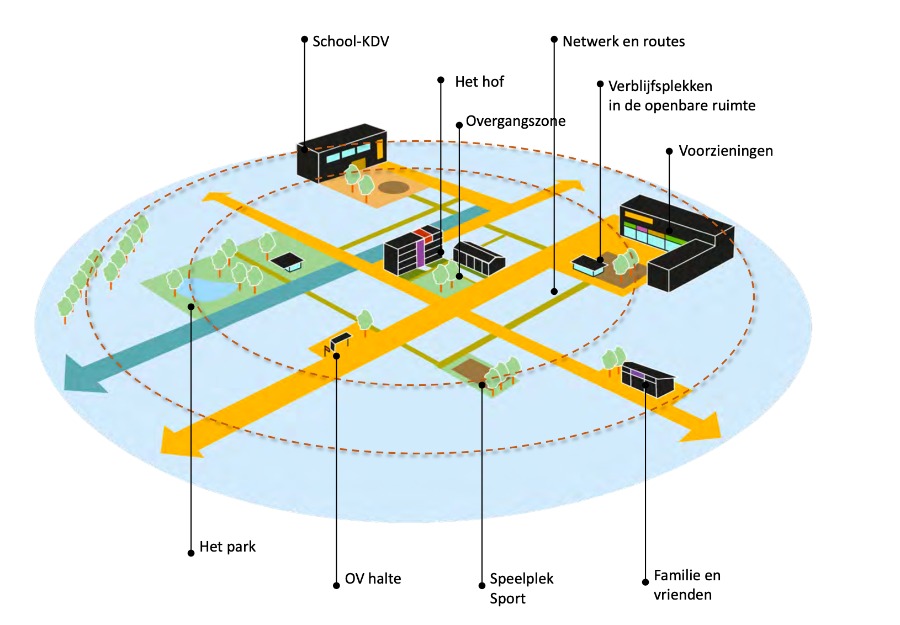
Voorbeelden van buurtdragers.
Maar er is hoop: de Couperusbuurt verwacht stedelijke vernieuwing en staat voor een nieuwe opgave de binding met de buurt en bewoners te versterken. ‘Dan is het nodig om de buurt in te gaan, te ervaren en de bewoners te spreken’, vertelt onderzoekster Treffers. ‘Niet iedereen staat te springen om vernieuwing. Wanneer je een goed overzicht hebt van hoe de buurt individueel beleefd wordt in relatie tot al bestaande buurtdragers, dan kun je pas gaan nadenken over fysieke ingrepen en investeringen die de leefbaarheid en de betrokkenheid bij de buurt kunnen verbeteren.’
Angst bij ouderen
Vooral bij ouderen heerst de angst dat het ‘dorpse gevoel’ door mogelijke ingrepen zou verdwijnen, vertelt Treffers. ‘Ze maken zich druk om de dagelijkse problematiek als grote hopen afval, geluidsoverlast en veiligheid; er zijn hangjongeren en spanningen tussen buren onderling. Maar ook nieuwe bewoners kennen een eigen soort ‘ongeduld’, meer gericht op de toekomst. Kort door de bocht gezegd verwelkomen zij zo snel mogelijk een Starbucks met latte macchiato's.’ En ook door observaties hoe mensen hun woonomgeving gebruiken, komt veel aan het licht: ‘We zien grote stenen pleinen zonder enkele functie, geen kind dat daar speelt. Net als tuinstoelen in het park door een gemis aan bankjes. Zijn die er wel, dan hebben die vaak geen rugleuning; wat moeten ouderen daarmee?’
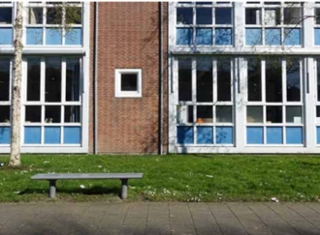
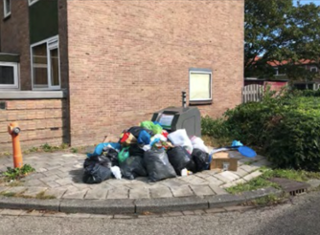
Voorbeelden van dagelijkse problematiek.
Van persoonlijke kaarten naar kansenkaart
De interviews en observaties omtrent bestaande buurtdragers zijn per doelgroep vertaald naar persoonlijke kaarten als een mindmap van de buurt, met daarop gevisualiseerd: routes, locatie van vrienden en familie, positieve en negatieve plekken, dagelijkse voorzieningen en horeca en recreatie. Treffers: ‘Wanneer je die kaarten over elkaar heen legt, zie je al snel de overlappende pijnpunten (vuil, geluidsoverlast, verstening), evenals de plekken met potentie. Met name de Couperusstraat biedt kansen, die loopt dwars door de buurt en kan als drager van de buurt gaan functioneren.’
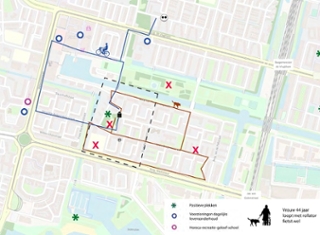
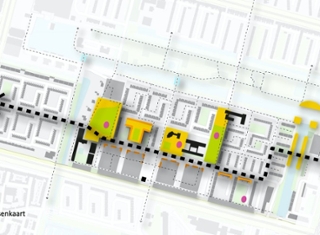
Persoonlijke kaart en kansenkaart - verbinding met de Couperusstraat.
In de eindpublicatie staan aanbevelingen voor gemeente en woningbouwcorporaties hoe de Couperusstraat bestaande en nieuwe buurtdragers aan elkaar kan verbinden. Zo kunnen alle groepen elkaar sneller kruisen, stelt Treffers. ‘Sociale cohesie in de buurt is misschien te hoog gegrepen, maar we kunnen wel publieke familiariteit realiseren. Wat dat is? We zagen iedere dag om 19.00 uur een aantal vrouwen van Turkse komaf op hetzelfde bankje in het park. Elke dag, op hetzelfde moment, kwam een man van in de 70 zijn hond daar uitlaten en maakte een kort praatje. Twee werelden die elkaar doorgaans niet snel ontmoeten in de Couperusbuurt. Die kortstondige ontmoetingen zonder verdere verplichtingen (publieke familiariteit) zorgen voor meer verbinding; zowel sociaal als fysiek.’
LEES DE EINDPUBLICATIE: BUURTDRAGERS IN DE COUPERUSBUURT
Meer informatie
Het project is de eerste verkenning in een langlopend onderzoek naar buurtdragers. Het vormt een waardevolle input voor de planvorming in de ontwikkelbuurten. Het onderzoek is vooral ook een middel om in nadere dialoog met gemeente en corporaties te verkennen naar wat voor soort buurtdragers we eigenlijk op zoek zijn. En waar zouden gemeente en corporaties maar ook andere partijen in moeten investeren in de buurt
Kijk voor meer informatie: projecten Buurtdragers en Ontwikkelbuurten.
3rd Intelligent Cities Challenge City Lab: Green Initiatives

During the 3rd ICC Lab, this session will bring together city relevant European Commission initiatives promoting the green agenda, with a view to depict the bigger picture, present their objectives, how they contribute to advance the EU policy priorities, show complementarities and discuss cross-fertilization among them.
Registration is possible via: https://www.intelligentcitieschallenge.eu/events/3rd-icc-city-lab
12:00 - 13:00 Tech4Good Marketplace
The Tech4Good Marketplace is an exchange of technology-powered solutions and business models designed to advance social, environmental and economic causes. Showcasing operational services from innovative European SMEs, start-ups and enterprises, the marketplace is a space where cities, regions and rural areas, businesses, technology entrepreneurs, social economy actors and civil society can get inspired and find solutions to the challenges they face. Join this session to find out why this marketplace is here to stay and why you should sign up, too.
- Anna Athanasopoulou, Head of Unit Proximity, Social Economy and Creative Industries, DG GROW, European Commission
- Iordana Eleftheriadou, Head of Cities and Proximity Team, DG GROW, European Commission
- Davor Meersman, OASC
13:00 - 14:00 Break
14:00 – 15:30 Initiatives at European Level on the Green Transition of Cities – Panel Discussion
Bringing together city-relevant European Commission initiatives promoting the green agenda, with a view to depict the bigger picture, present their objectives, how they contribute to advance the EU policy priorities, show complementarities and discuss cross-fertilization among them.
- Anna Athanasopoulou, Head of Unit Proximity, Social Economy and Creative Industries, DG GROW, European Commission
- Marek Teplansky, Head of Unit, Inclusive Growth, Urban and Territorial Development, DG REGIO, European Commission
- Philippe Froissard, Head of Unit, Future Urban & Mobility Systems, DG RTD, European Commission
- Eddy Hartog, Head of Unit, Technologies for Smart Communities, DG CNECT, European Commission
- Xavier Troussard, Head of Unit, New European Bauhaus, JRC, European Commission
- Helen Mccarthy-O’ Kelly, Policy officer, Environmental Knowledge, Eco-Innovation & SMEs, DG ENV, European Commission
- Luana Maria Bidasca, Policy officer, Innovation & Research, DG MOVE, European Commission
3rd Intelligent Cities Challenge Lab Public Event

During the EU Green Week, the 3rd Intelligent Cities Challenge (ICC) City Lab will bring together global thinker urban development experts and city leaders across the globe to issues climate-neutral and socially responsible industrial future.
The event is open to the public and registration is possible via: https://www.intelligentcitieschallenge.eu/events/3rd-icc-city-lab
Program
11:30 – 13:00 Public session 1 – Zero pollution city: Leading the green transition of local businesses
- Anna Athanasopoulou, Head of Unit Proximity, Social Economy and Creative Industries, DG GROW, European Commission
- Tadashi Matsumoto, Head of the Sustainable Development & Global Relations Unit, OECD
- Michael Koh, Executive Fellow, Centre for Liveable Cities - City of Singapore, clean and green environment
- Victor Dimoulis, Scientific Advisor to the Mayor on Waste management and Circular Economy affairs - City of Corfu, industrial waste management
- Geertje Pronk, Researcher and Programme manager at KWR Water Research Institute - City of Mechelen, water management
- Rosa Väisänen, Specialist, City of Espoo, Sustainable Urban Development
ICC Cities’ experts to present initiatives on zero pollution:
- Sharing reflections and work done to overcome pollution at city-level
- Inspire others with ideas on how digital tools can be used to prevent intense pollution, monitor status, or warn citizens of high levels of pollution
- Provide insights into key lessons learned
13:00 – 13:30 Break
13:30 – 15:00 Public session 2 – City of the future: New urban trends for a climate-neutral and socially responsible industrial future
- Dana Eleftheriadou, Head of Cities and Proximity Team, DG GROW, European Commission
- Valentina Superti, Director of Proximity and Tourism, DG GROW, European Commission
- Jan Olbrycht, President of the URBAN Intergroup, European Parliament
- Carlo Ratti, Director, MIT Senseable City Laboratory – ICC advisory board member
- Gesa Ziemer, Head of CityScienceLab, UNITAC Innovation Technology Accelerator Centre, Hamburg – ICC mentor city
- Michela Magas, Chair, Industry Commons Foundation
- Nicolás Rivillas Hincapié, Deputy Manager of Design and Innovation, Urban Development Company (EDU) of Medellín - ICC mentor city
- Daniel Gonzalez-Bootello, Director of Smart City Cluster - ICC advisory board member
Bringing together global thinkers, urban development experts, city leaders from across the globe to showcase how intelligent cities will lead the way to a sustainable, productive, zero-pollution future:
- What will the urban future look like after the Covid-19? How can cities prepare?
- How can cities reconcile population growth and local industrial production with the European Green Deal?
- What can city leaders do to ensure a new City model that is sustainable, resilient, socially just and knowledge intensive?
Metropolitan Mobility Podcast | Why are Milan's children playing on the street again?

Demetrio Scopelliti (Director of Urban Planning and Public Space, city of Milan) speaks with Geert Kloppenburg and Chris Bruntlett (Dutch Cycling Embassy) about the Piazze Aperte and Strate Aperte Plan that changed the streets and squares of Milan.
In the podcast they talk about:
• How introducing a ping pong table brings people together;
• How you (urban) plan for the unexpected;
• How the city of Milan built 60 kilometers of cycling track in a year.
And see a short video of the project
Interested in more best practices in EU cities? Register here for the Celebrating Cycling Cities event 1st of June, with Stientje van Veldhoven and Frans Timmermans!
CoECI X Designing Cities for All

Hoe ziet de stad van de toekomst eruit? Heb jij creatieve ideeën, ontwerpen of dromen over een duurzame en inclusieve toekomst? Doe dan mee aan de livecast van het Centre of Expertise for Creative Innovation bij Pakhuis de Zwijger. We kijken uit naar je komst!
Dromen over een duurzame en inclusieve stad
27 mei - 18:30 uur - Live vanuit Pakhuis de Zwijger
Het New European Bauhaus-initiatief verbindt de Europese Green Deal met onze leefruimtes en het roept alle Europeanen op om zich een duurzame en inclusieve toekomst voor te stellen. Vanuit dit idee organiseren wij samen met Designing Cities for All een livecast waarin deze toekomstscenario’s worden gevisualiseerd en waarin wordt nagedacht over wat ervoor nodig is om zo’n mogelijke toekomst te realiseren.
Hoe zullen onze toekomstige steden eruit zien, wie zullen er in deze steden wonen en wat zijn de stappen die we moeten nemen om daar te komen? Een avond met dromers, denkers en designers.
Over de sprekers
Edwin Gardner is een futurist, architect en bedenker van toekomstscenario’s. Met Christiaan Fruneaux runt hij De Chrononaten, een wekelijkse nieuwsbrief / community voor langetermijndenken en werkt hij aan een geïllustreerde gids van Amsterdam in 2091.
Guido Stompff is designer en promoveerde aan de TU Delft op Design Thinking in organisaties. Vanaf 2019 is hij docent en onderzoeker Design Thinking, onderdeel van de onderzoeksgroep Creative Business aan de Hogeschool Inholland.
Manon Poliste is ontwerper en adviseur Urban Strategy bij Inbo. Ze maakt zich hard voor toekomstbestendige ontwerp-oplossingen met aandacht voor de mens, maatschappij en leefomgeving.
Jurgen Bey kan worden beschouwd als een van de eerste conceptuele ontwerpers van Nederland en hij hoorde bij de generatie die in de jaren negentig Dutch Design groot heeft gemaakt. Onder de vlag van Droog Design maakte hij internationaal naam als visionair ontwerper.
Nyasha Harper-Michon wil zich als creatief denker, architect, business developer en marketeer inzetten voor een veerkrachtige, duurzame en circulaire toekomst. Nyasha beschouwt zichzelf als een archtivist.
Bart Ahsmann is directeur van CLICKNL, het Kennis- en Innovatienetwerk van de Creatieve Industrie in Nederland. Opgeleid als industrieel ontwerper aan de TU Delft, is alles voor Bart een ontwerprobleem.
Mike de Kreek is docent Qualitative Research Designs en Social use of IT and new media, bij de masteropleiding Social Work aan de Hogeschool van Amsterdam. Hij ziet leren als een sociaal proces waarin woorden als samensturing en kennis in co-creatie centraal staan.
CoECI - Creative Thursday Meetup #1

CREATIVE LABS ALS VOEDINGSBODEM VOOR TALENTONTWIKKELING
Op donderdag 3 juni van 16.00-17.00u vindt de eerste Creative Thursday Meetup plaats van het Centre of Expertise for Creative Innovation (CoECI). Tijdens deze meetups kun je achterover leunen, kennis opdoen en partners voor samenwerking vinden. Een meetup zonder al teveel regels, maar altijd met prikkelende sprekers die vertellen wat creatieve innovatie betekent en hoe het bijdraagt aan een specifiek maatschappelijk vraagstuk.
Kom naar onze eerste online meetup en maak kennis met het team, twee inspirerende gasten en ga met ons in gesprek!
Te gast tijdens de eerste meetup zijn: Koos Zwaan, onderzoeker en Lab Lead van het International Music Lab Inholland en Matthijs ten Berge, medeoprichter van de AHK Culture Club. Zij nemen ons mee in hun creatieve wereld waar onderzoek, onderwijs, kunst en cultuur samenkomen in een creatief lab, en hoe dit vervolgens de motor kan zijn voor maatschappelijke innovatie en talentontwikkeling.
PROGRAMMA
16:00 | Inloop & Voorstelrondje via chat
16:10 | Welkom & Update community
16:20 | Koos Zwaan - IMA Lab Inholland
16:30 | Matthijs ten Berge - AHK Culture Club
16:40 | Break-outs - Praat verder met Koos of Matthijs
16:55 | Gezamenlijke afsluiting
17:00 | Einde
Stay up to date
Get notified about new updates, opportunities or events that match your interests.

